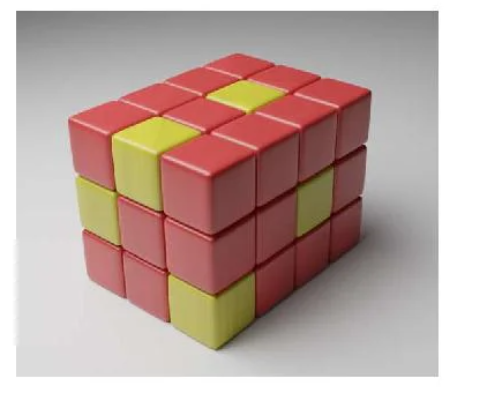Questions
Coloured cubes red and yellow of equal size are arranged and
Coloured cubes (red and yellow) of equal size are arranged and stacked to form the cuboidal structure as shown in the image. If the ratio of the number of yellow cubes to that of the red cubes is 1:3, how many yellow cubes are NOT visible in the image?
Answers :
To determine how many yellow cubes are not visible in the image, we first need to understand the total structure and the ratio provided.
-
Count the visible cubes. From the image, we can count the number of visible cubes on the outer layer of the cuboid.
-
Determine the dimensions of the cuboidal structure. By observation:
- There are 4 cubes along the length (4 visible along the front).
- There are 3 cubes along the height.
- There are 3 cubes along the depth. This makes the dimensions 4 x 3 x 3.
-
Calculate the total number of cubes in the structure. Total cubes = .
-
Apply the ratio to find the number of yellow and red cubes. The ratio of yellow cubes to red cubes is 1:3. Let be the number of yellow cubes, and therefore would be the number of red cubes. Since , we solve for :
So, there are 9 yellow cubes and 27 red cubes in the structure.
-
Count the number of visible yellow cubes. By examining the image, we can count the visible yellow cubes:
- There are 4 yellow cubes visible on the front face.
- 1 additional yellow cube is visible on the top (as part of the front face count).
-
Determine the number of not visible yellow cubes. Out of the total 9 yellow cubes:
Hence, there are yellow cubes that are not visible in the image.
Answered By

